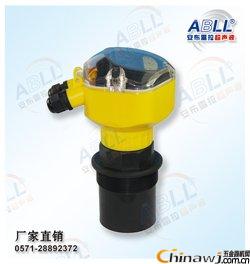Recently, a customer bought our 6 POLO series two-wire explosion-proof ultrasonic level gauges, which are used to measure liquid alkali, formaldehyde, sulfuric acid and acetone.
Recently, a customer bought our 6 POLO series two-wire explosion-proof ultrasonic level gauges, which are used to measure liquid alkali, formaldehyde, sulfuric acid and acetone.
After using it for two weeks, I will call me to say that the liquid alkali, formaldehyde and sulfuric acid can be measured. The measurement on the acetone tank is not accurate, and the error is very large, which can reach 30-40%. I went to the scene and got a call to find out the general situation.
After the POLO series two-wire explosion-proof ultrasonic level gauge is installed, the distance from the probe to the bottom of the tank is 4 meters, the liquid level of acetone in the field is 2 meters, and the liquid level measured by the ultrasonic level gauge is 1 meter. This is because the speed of sound set by the ultrasonic level gauge itself is 331 m/s. Acetone is a highly volatile liquid, which causes the sound velocity of the gas in the tank to be different from the sound speed set by the ultrasonic wave, thereby measuring the error.
Our POLO series two-wire explosion-proof ultrasonic level gauge has a sound speed setting function. We can modify the set sound velocity of the ultrasonic level gauge itself to be close to the gas velocity in the tank to improve the accuracy of the measurement.
First, calculate the sound velocity of the gas in the tank
1. The height of the liquid level measured by the ultrasonic level gauge is 1 meter, and the height of the probe installation is 4 meters, 4 meters - 1 meter = 3 meters. Because the ultrasonic wave is emitted to the liquid surface and then emitted back, the distance that the sound wave travels is 3 meters x 2 = 6 meters. 6 meters ÷ 331 meters / sec = 0.01812 seconds.
2. Calculate the sound velocity of the gas in the can according to the time when the sound wave is transmitted to the receiver.
The actual probe to tank level in the tank is 4-2 = 2 meters.
The actual distance the sound wave passes is: 2 meters × 2 = 4 meters.
The gas sound velocity in the can is 4 meters ÷ 0.01812 seconds = 220.75 meters ≈ 221 meters / sec.
Enter the POLO series two-wire explosion-proof ultrasonic level gauge, change the password to “0101â€, enter the hidden menu, change the speed of sound 331 meters to 221 (because there is no decimal in the sound speed setting in the level gauge), and exit after saving.
The POLO series of two-wire explosion-proof ultrasonic level gauges now measure a liquid level of 2.05 meters. This is very close to the actual liquid level. Here is a description of the fact that the sound velocity calibration can reduce the large error, but in the volatile liquid, because the sound velocity in the can is constantly fluctuating, the accuracy of the ultrasonic level gauge measurement will still be after the sound velocity is modified. It is worse than measuring water, and it is basically within 5%.
Http://news.chinawj.com.cn
 Editor: (Hardware Business Network Information Center) http://news.chinawj.com.cn
Editor: (Hardware Business Network Information Center) http://news.chinawj.com.cn 
High-power gear motors provide unparalleled speed and torque performance, durability and high-performance energy-saving operation. Their excellent performance has been widely used in various application fields. Their accuracy and torque can well meet customer needs. It is an entry-level equipment that provides simple and effective transmission solutions specifically for your application.
Gear reducer motor, micro motor, mini motor
Changzhou Yuanwang Fluid Technology Co., Ltd. , https://www.ywfluid.com